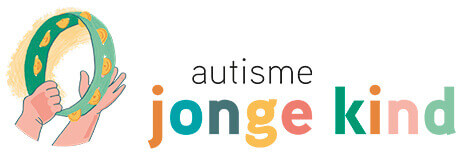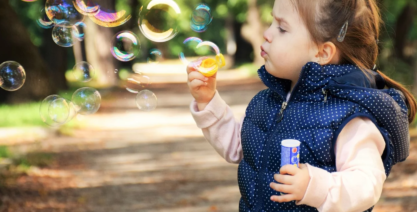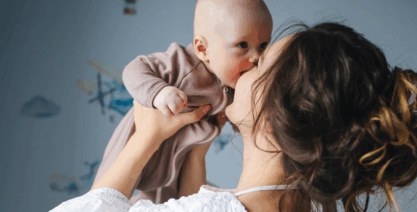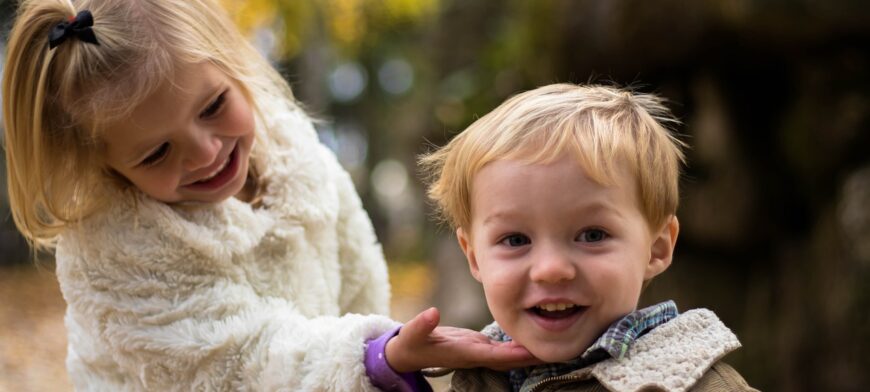
Early traits of autism
How can you tell if a child has autism? There are certain traits in the behaviour of young children that could indicate that a child has an autism spectrum disorder (ASD). Traits of autism may include, for instance, that your child:
- does not often look others in the eye, or smile at others.
- does not react when spoken to.
- has little interest in other people.
- is difficult to comfort.
- babbles little, or has trouble getting language going.
- plays with little variety.
- can get extremely angry about small things.
- barely reacts when he or she gets hurt.
- has great difficulty falling or staying asleep.
- has eating problems.
- is very focused on certain topics or details.
Below you will find an overview of so-called 'alarm signals' for children aged 0-4 and for children aged 4-6. For older children, no reliable list is freely available online (yet), unfortunately.
Traits of autism in children up to 4 years old
The overview below lists several traits that may occur in very young children (up to 4 years). These symptoms may point to autism.
Does not smile at others (from 12 months)You try to interact with your child and smile at him or her. But your child does not respond. Your child is less focused on others around. Your child is also less inclined to smile back when others smile at him or her. Your child does not often take the initiative himself/herself to share fun with others by smiling at them. |
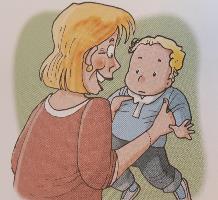 |
Does not react when spoken to (from 12 months)When your child is addressed by his/her name, he/she appears deaf. Your child reacts less well or not at all, and does not, or barely, look up. |
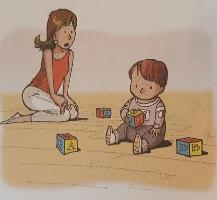 |
Does not babble (from 12 months)Your child makes no or few sounds that resemble words, and babbles little or not at all during play. |
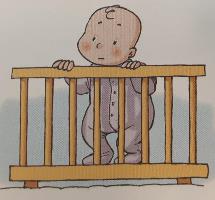 |
Does not make gestures (pointing and waving) (from 12 months)Your child does not make gestures, and/or points yet. Examples of gestures are: nodding yes, shaking no, waving, a gesture for 'up' or 'away'. |
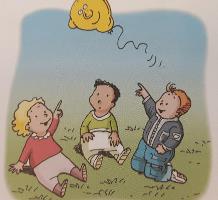 |
Has no interest in other people (from 12 months)Your child is mainly focused on himself/herself, and pays little attention to people around. For example, he/she is barely curious about an adult's input in play, or pays little attention to what other children are doing. |
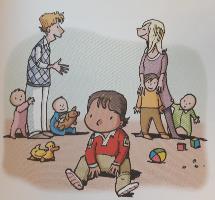 |
Does not make use of words in a functional manner (from 18 months)Your child does not use words (or sounds similar to words) to indicate that he/she wants something, or to direct attention to something. |
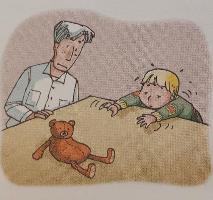 |
Does not use two-word sentences (excluding echolalia) (from 24 months)Your child does not use spontaneous two-word sentences to communicate. Such as: 'drive car' or 'have cake'. Repeating what another person says without the intention to communicate (echolalia) is not meant here. Naturally, this symptom can for instance also point to – besides a risk of autism – language development issues without autism. |
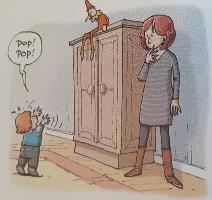 |
Any loss of language or social skills (Any age)Your child can no longer do things, or do them less well, that he or she could before. For instance when it comes to language or social skills. Examples of this are:
Even though your child did do this before. It is worrisome if your child can no longer do things, or can only do them less well. At any age. Unless it is clearly related to circumstances, and is temporary. |
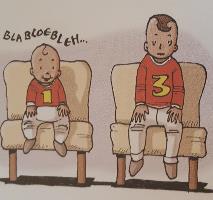 |
Source: Dietz, C. (2007). The early screening of Autistic Spectrum Disorders. Gildeprint: Enschede
If you recognise one or more of the above traits in your child, it certainly does not have to be a case of autism. But it can be a good reason to further explore whether something is the matter. A good next step is to complete the CoSoS/ESAT test (Early Screening of Autistic Traits).
PLEASE NOTE: It may be the case that none of the traits apply to your child, but you are still worried. Even then, it can be useful to complete the ESAT questionnaire. In it, other traits of autism are included. For example, that your child:
- is difficult to comfort.
- has sleeping problems.
- has eating problems.
- bites or hits others for no apparent reason.
- constantly clings to you.
- is very anxious about new situations.
Take the CoSoS (ESAT) questionnaire >
Traits of autism in children aged 4-6 years
For the age group 4-6 years, there is the Dietz & van Berckelaer's (2013) signal list of autism traits. You can find the list below. This list includes signs that may point to autism in children aged 4-6 years. The signs are grouped into four areas:
1. Social interaction
|
2. Communication
|
3. Stereotypies
|
4. Stimulus processingA remarkable stimulus processing applies: he/she is notably hyper- or hypo- sensitive to certain stimuli. For example, smells at everything, persists in groping/feeling, is very interested in flashes of light, always covers his/her ears at loud noises. |
Does not, on the whole, make an age-appropriate impression |
Source: Bijlage ASS alarmsignalen lijst 4-18 jaar (Dietz & Berckelaer, 2013), NCJ Richtlijn Autismespectrumstoornissen 2015.
If you recognise three or more traits (which are not exclusively within one area), it is advisable to take further steps..
PLEASE NOTE: Did you find fewer than three signs that apply to your child, but you are still worried? Even then, it is good to explore those concerns further and see whether they are justified. You can, for instance, discuss your concerns with a professional..
Blijf op de hoogte
Wil je op de hoogte blijven van nieuwe informatie over autisme bij jonge kinderen? Meld je dan aan voor de gratis digitale nieuwsbrief van het Landelijk Expertisenetwerk Autisme Jonge Kind. De nieuwsbrief verschijnt ongeveer 4 keer per jaar.
Ja, ik schrijf me in voor de nieuwsbrief >
Wil je meer weten over (de diagnose) autisme? Bezoek de website van de Nederlandse Vereniging voor Autisme (NVA).
